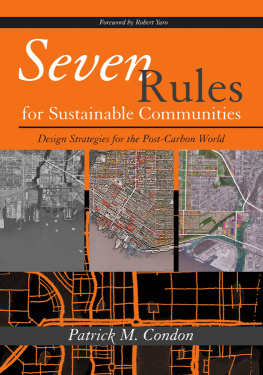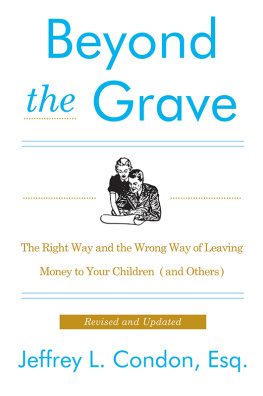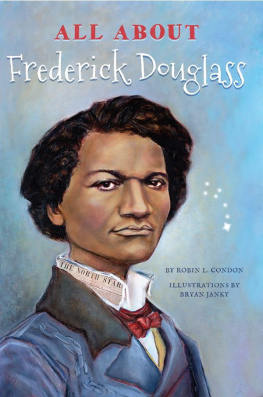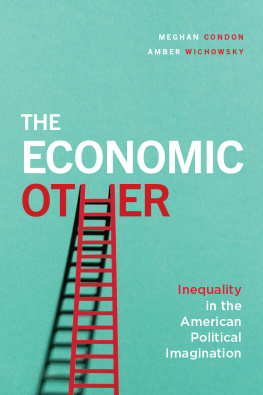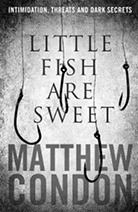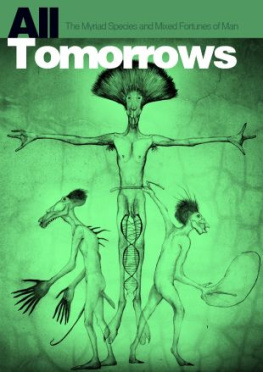Patrick M. Condon - Five Rules for Tomorrows Cities
Here you can read online Patrick M. Condon - Five Rules for Tomorrows Cities full text of the book (entire story) in english for free. Download pdf and epub, get meaning, cover and reviews about this ebook. year: 2019, publisher: Island Press, genre: Romance novel. Description of the work, (preface) as well as reviews are available. Best literature library LitArk.com created for fans of good reading and offers a wide selection of genres:
Romance novel
Science fiction
Adventure
Detective
Science
History
Home and family
Prose
Art
Politics
Computer
Non-fiction
Religion
Business
Children
Humor
Choose a favorite category and find really read worthwhile books. Enjoy immersion in the world of imagination, feel the emotions of the characters or learn something new for yourself, make an fascinating discovery.
- Book:Five Rules for Tomorrows Cities
- Author:
- Publisher:Island Press
- Genre:
- Year:2019
- Rating:5 / 5
- Favourites:Add to favourites
- Your mark:
- 100
- 1
- 2
- 3
- 4
- 5
Five Rules for Tomorrows Cities: summary, description and annotation
We offer to read an annotation, description, summary or preface (depends on what the author of the book "Five Rules for Tomorrows Cities" wrote himself). If you haven't found the necessary information about the book — write in the comments, we will try to find it.
Five Rules for Tomorrows Cities — read online for free the complete book (whole text) full work
Below is the text of the book, divided by pages. System saving the place of the last page read, allows you to conveniently read the book "Five Rules for Tomorrows Cities" online for free, without having to search again every time where you left off. Put a bookmark, and you can go to the page where you finished reading at any time.
Font size:
Interval:
Bookmark:
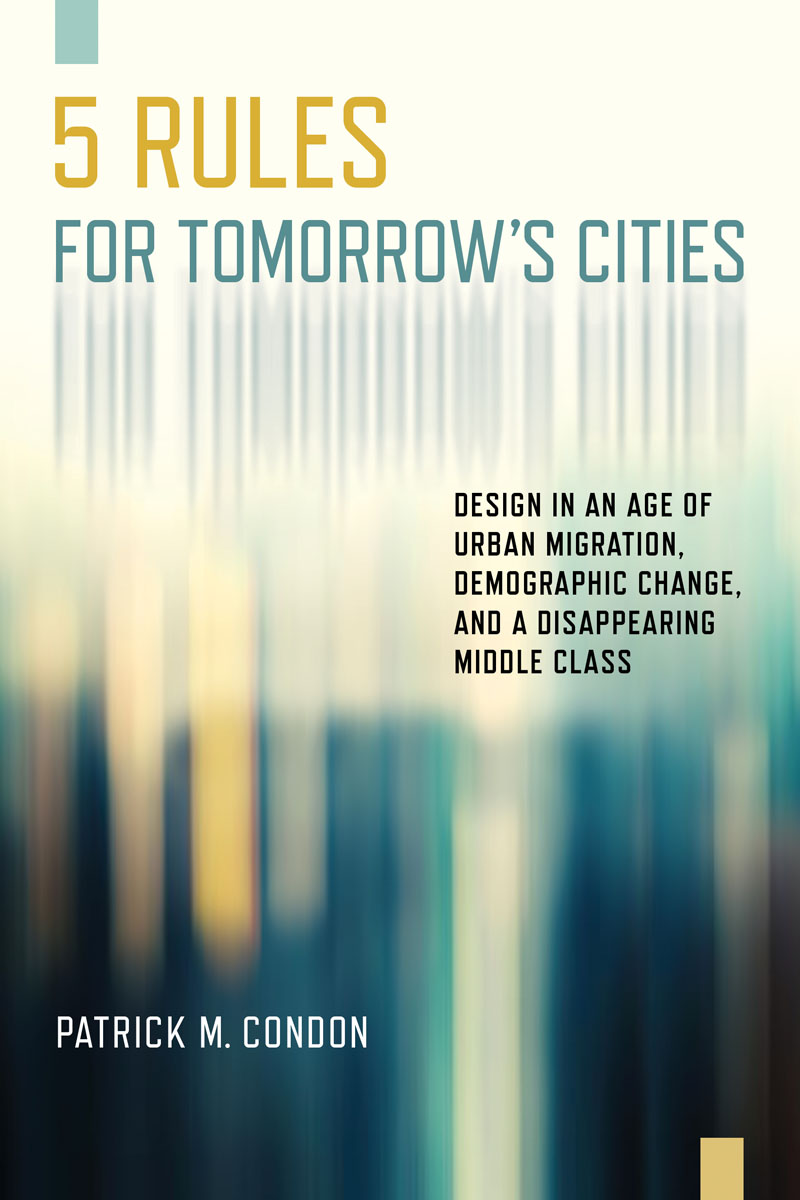
Since 1984, the nonprofit organization Island Press has been stimulating, shaping, and communicating ideas that are essential for solving environmental problems worldwide. With more than 1,000 titles in print and some 30 new releases each year, we are the nations leading publisher on environmental issues. We identify innovative thinkers and emerging trends in the environmental field. We work with world-renowned experts and authors to develop cross-disciplinary solutions to environmental challenges.
Island Press designs and executes educational campaigns, in conjunction with our authors, to communicate their critical messages in print, in person, and online using the latest technologies, innovative programs, and the media. Our goal is to reach targeted audiencesscientists, policy makers, environmental advocates, urban planners, the media, and concerned citizenswith information that can be used to create the framework for long-term ecological health and human well-being.
Island Press gratefully acknowledges major support from The Bobolink Foundation, Caldera Foundation, The Curtis and Edith Munson Foundation, The Forrest C. and Frances H. Lattner Foundation, The JPB Foundation, The Kresge Foundation, The Summit Charitable Foundation, Inc., and many other generous organizations and individuals.
The opinions expressed in this book are those of the author(s) and do not necessarily reflect the views of our supporters.

Island Press mission is to provide the best ideas and information to those seeking to understand and protect the environment and create solutions to its complex problems. Click here to get our newsletter for the latest news on authors, events, and free book giveaways.

Copyright 2019 Patrick M. Condon
All rights reserved under International and Pan-American Copyright Conventions. No part of this book may be reproduced in any form or by any means without permission in writing from the publisher: Island Press, Suite 650, 2000 M Street, NW, Washington, DC 20036.
ISLAND PRESS is a trademark of the Center for Resource Economics.
Library of Congress Control Number: 2019948329
All Island Press books are printed on environmentally responsible materials.
Manufactured in the United States of America
10 9 8 7 6 5 4 3 2 1
Keywords: adaptability, affordable housing, birth rate, favela, formal city, fractals, green infrastructure, housing, immigration, inequality, informal city, migration, Missing Middle Housing, population, resilience, slum, street grid, sustainability indicators, systems thinking, urban acupuncture, urban district, wage gap
This book is written by the listed author, Patrick M. Condon. However, in this book the pronoun used most often throughout is we rather than I or me, because hundreds of people have participated with me in the scores of urban design projects that inform this book. At this stage its very hard to distinguish which thoughts are mine and which thoughts are theirs. And in the end it doesnt matter. Good urban design is collaborative urban design, where different minds make different contributions in a process where the whole is much greater than the sum of its parts. This is as it should be. For a central theme of this book is that cities are a system, where the interaction of all of its parts creates something larger. And for urban designers that something larger is a sustainable and, insofar as it is possible, an equitable city.
I trust that I have captured the consensus of our thinking, and I apologize if I have strayed too far afield. Many but not all of these people are listed in the Acknowledgments. It would be impossible to list them all because any good urban design comes through the agency of deep and extensive collaboration with many stakeholders. Literally, there have been many hundreds. My apologies to those I missed, but I hope you might recognize some of your thinking in these pages and recall the times when they were voiced or illustrated.
As will be clear from the text, the insights presented here emerged from collaborations over the years with many people. Sadly, there are too many to mention in a comprehensive way. Still, honor requires me to call out at least a few, all in the sequence that they spring to mind rather than any rank order of their importance or the depth of our friendships. I start with Robert Lane of RPA New York, with whom I have enjoyed many adventures, many of them including Bob Yaro, former head of RPA, and Armando Carbonelle, senior fellow at the Lincoln Institute of Land Policy. Closer to home and partners in many more local adventures, I acknowledge Daniel Roehr, Ron Walkey, Susan Milly, Sheryl Webster, Sara Muir, Kari Dow, Sara Barron, and Ron Kellettall of the University of British Columbia, in various past and present capacitiesfor their part in many charrette exploits. Also a collaborator over many years now is David Beers, founding editor of The Tyee. Next, I thank my children, Alanna, Ryan, Kate, and William, and my grandchildren, Toby, Reese, Jasper, Emery, and Harriet, all of whom are on my mind when Im writing a book like this one, which tries to look into the future and imagine a path to a better world.
In no particular order but included because they have inspired me in ways they may not realize, I thank Doug Kelbaugh, Harrison Fraker, Bob Worden, Warren Byrd, Leslie Van Duzer, Michael Van Valkenburgh, Julius Fabos, Paul Procopio, Colin Cathcart (aka The Franchise), Michael Mehaffy, James Meyer, Dean Cardasis, Hal Moser, Larry Cashin, Madeline OReilly, Mary Herbowie, Ann OSullivan, Neda Roonia, Bob Sykes, Andres Duany, Douglas Duany, James OConnor, Josh Posner, and Paul Saba. Last but not least, I thank my editor at Island Press, Heather Boyer, who many years ago encouraged me to write books for students and practitioners. This book is my third for and with her. I deeply hope that it is worthy of her creative efforts.
This book is dedicated to all students of urban designpast, present, and future. You have such important work to do.
T he purpose of this book is to answer one big question: How can designers of this generation first assimilate and then incorporate ongoing cultural, economic, and ecological changesinterconnected changes occurring worldwideinto their city building work?
In this book, when we use the term urban designers we include anyone involved in the act of city building. This of course includes architects, landscape architects, planners, developers, and public officials. But it also includes the young, who are struggling to understand their fast-changing and increasingly inequitable world, and concerned citizens who want to make a difference in their own communities.
We perceive a real lack of focus in our design field on three cresting cultural waves, waves that are overlapping in ways that are already transforming the city: the worldwide rural-to-urban migration, the collapse of global fertility rates, and the disappearance of the middle class. All three major waves are crossing and combining in intricate ways and will leave a different city in their wake. In fact, the impact of these three waves is already patently clear.
Next pageFont size:
Interval:
Bookmark:
Similar books «Five Rules for Tomorrows Cities»
Look at similar books to Five Rules for Tomorrows Cities. We have selected literature similar in name and meaning in the hope of providing readers with more options to find new, interesting, not yet read works.
Discussion, reviews of the book Five Rules for Tomorrows Cities and just readers' own opinions. Leave your comments, write what you think about the work, its meaning or the main characters. Specify what exactly you liked and what you didn't like, and why you think so.


